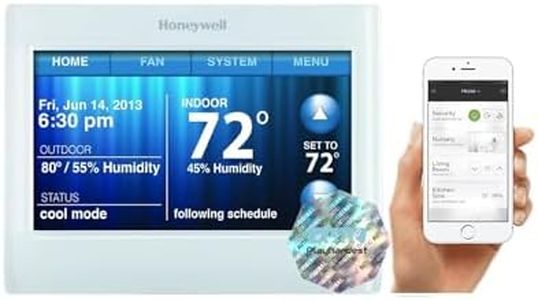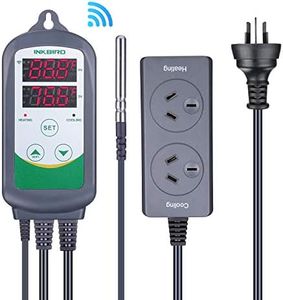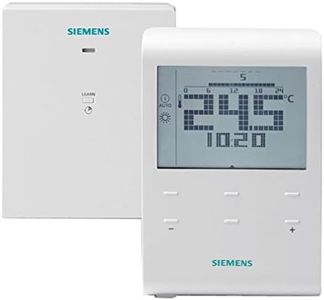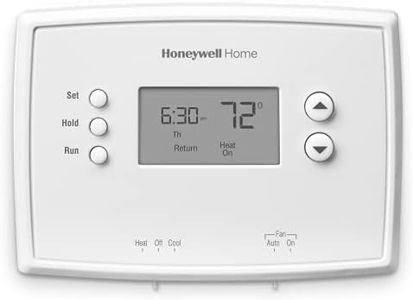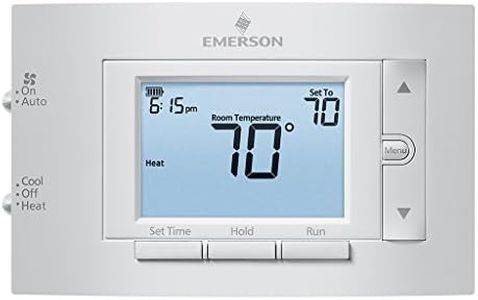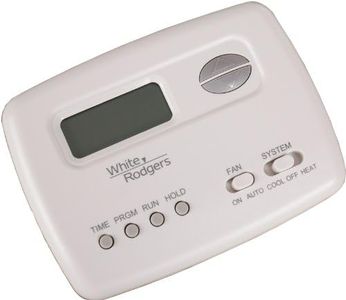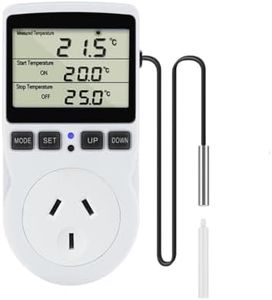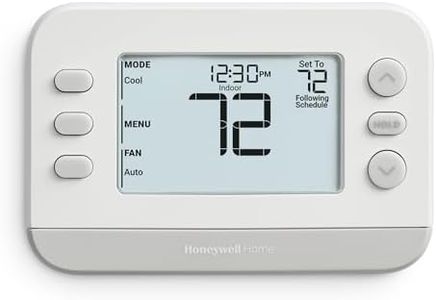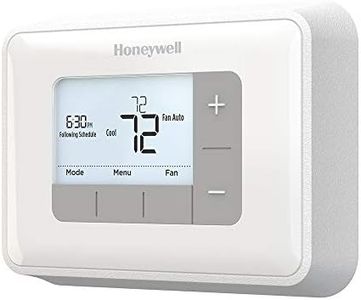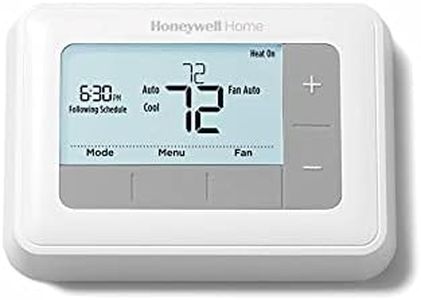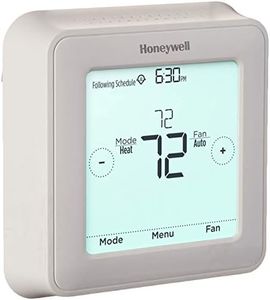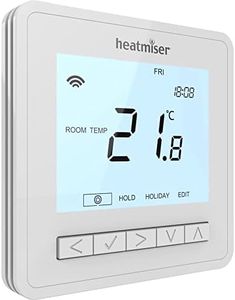We Use CookiesWe use cookies to enhance the security, performance,
functionality and for analytical and promotional activities. By continuing to browse this site you
are agreeing to our privacy policy
10 Best Commercial Thermostats
From leading brands and best sellers available on the web.Buying Guide for the Best Commercial Thermostats
Choosing a commercial thermostat is about finding the right balance between energy efficiency, ease of use, and building management needs. Commercial settings can be complex, often involving multiple zones or areas that need different temperatures at various times. Your choice should reflect the size and style of your building, the number of zones you need to control, and whether you want advanced features like remote monitoring or integration with building management systems. Thinking about who will operate the thermostat and how often adjustments will be made can also help you make a good decision.Control TypeThe control type determines how you interact with your thermostat and how flexible the scheduling or temperature management can be. There are manual, programmable, and smart thermostats. Manual thermostats are simple and adjusted by hand but offer little in terms of scheduling. Programmable thermostats allow you to set temperature schedules for different times of day or days of the week, making them much more energy efficient. Smart thermostats can be managed remotely via apps and often include learning or automation features. For a commercial space, consider how many people need to access the controls and how advanced the scheduling should be for comfort and efficiency.
Number of Zones SupportedZones refer to separate areas in your building that can be set to different temperatures. This is important in commercial settings where different spaces may have different heating or cooling needs. Simple thermostats might only control one zone, while advanced models can handle multiple zones at once. If your building has different offices or uses throughout the day, a multi-zone thermostat helps you customize comfort and reduce wasted energy. Think about your building layout and whether you need separate temperature control in various parts.
Compatibility with HVAC SystemsNot all thermostats work with every type of heating, ventilation, and air conditioning (HVAC) system. Some are designed for simple single-stage systems, while others can manage complex multi-stage units, heat pumps, or even rooftop units common in commercial settings. Checking compatibility is crucial to ensure the thermostat will actually control your system the way you expect. Look for details from your HVAC provider or system manual so you get a thermostat that communicates fully with your current setup.
Connectivity and Remote AccessConnectivity describes whether and how a thermostat connects to networks or building management systems. Basic units may not connect at all, while others offer Wi-Fi, Ethernet, or support for building automation protocols. With remote access, you (or facility managers) can monitor and change settings from a smartphone, computer, or centralized dashboard. This is helpful for larger spaces, multiple locations, or when the thermostat needs to be managed offsite. Decide if you want the convenience and oversight of remote management or prefer to keep things local.
User InterfaceThe user interface is how you see information and change settings. Options range from simple dials and buttons to touchscreens or mobile app interfaces. Easy-to-read displays and intuitive controls are important, especially if many staff or visitors will interact with the thermostat. In a busy commercial environment, a clear and easy-to-operate interface can reduce confusion and ensure the right temperatures are set consistently.
Scheduling and Automation FeaturesScheduling features let you set temperatures for different periods, such as work hours and weekends. Advanced automation might include occupancy sensors that adjust settings when people are present or learning capabilities that adapt to usage patterns. Simple scheduling can save energy and money, but intelligent automation offers finer control and can further optimize comfort. Assess how regular your schedule is and how much you want the thermostat to autonomously manage energy use.
Energy Usage ReportingSome thermostats provide reports or analytics on energy usage, helping you track heating and cooling patterns over time. Access to this data can be valuable for identifying waste, planning efficiency upgrades, and meeting sustainability goals. If you're working to reduce operational costs or meet green standards, look for thermostats that clearly report or analyze energy consumption.
